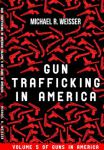Ever since Ferguson, it seems like there’s a nasty story every day about a cop shooting someone who shouldn’t have necessarily ended up in the line of fire and gotten killed. Actually, according to Harper’s Magazine, an average of 2.6 people have been killed every day this year by police gunfire, which totals almost 600 this year, compared to 461 civilians killed by police in all of 2013.
The seriousness of civilians getting shot by cops goes far beyond the numbers. The perception is growing that it’s not just a lack of training that is reflected by these grim statistics but a surge of racism which has always been the elephant in the living room when it comes to relations between minorities and the police.
We don’t yet have numbers on 2014 police shootings but from 1980 through 2014, the average number of cops killed by civilians was 64 per year. The 2013 total of 27 was the lowest recorded over that entire span, it jumped back up to 51 in 2014 but the unofficial number of police officers shot this year stands at 20 so far, which at that rate will bring us to a significantly reduced toll in 2015 when compared to last year. So shootings by police are up by 30% this year and the number of cops shot and killed is down this year by about the same degree. What’s going on?
It would be tempting to say that the reason for so many more police shootings is that so many bad guys are walking around with guns. But since the data on police shootings doesn’t reveal whether the victim possessed a gun or was actually using the gun when the incident occurred, we can’t say for sure that police have become more ‘trigger-happy’ because they find themselves facing more guns. On the other hand, when police are killed in what the FBI refers to as ‘felonious events,’ the perpetrator is almost always found to have carried and used a gun.
Is there a chance that we may be looking at the issue of police shootings in a way which hides more than it reveals? Just because someone clips a shield onto their shirt, we tend to believe that with training, cops will somehow behave differently from non-cops when it comes to how and when they use their guns. I’m not so sure.
Let’s take a more detailed look at the FBI report on the 51 cops who were feloniously killed in the line of duty in 2014. Of that total, 11 were killed while they were answering disturbance calls, another 10 were gunned down during traffic stops, 8 more were ambushed and 6 were investigating ‘suspicious’ persons. The remainder died during random police activities which turned violent because either a mentally-ill person got out of control or someone being arrested for some charge got angry and one way or another let fly.
If you take the shield away from the officer and look at these incidents as simply two armed persons going up against one another, it would be pretty hard to distinguish between these 51 gun homicides in which the victims were cops and the thousands of gun homicides each year where the only real difference between the victim and the perpetrator is that the perpetrator shot first. And what makes me feel somewhat sure of what I just said is a new report which shows that cops in states with high levels of gun ownership are three times as likely to be killed in the line of duty as cops who serve in states which have fewer civilian-owned guns.
Despite the NRA-sanctioned nonsense about how good guys with guns protect us from bad guys, the same states that have high levels of gun ownership also have higher rates of gun crime. When it comes to gun violence, I don’t care if someone’s wearing a shield or not, the evidence is clear: too many goddamn guns, period. Too many guns.
Get it on Amazon.




Recent Comments